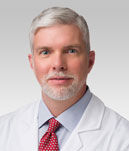Doctor Q&A: How To Avoid Bacterial Endocarditis Infections At The Dentist?
Written By: Allison DeMajistre, BSN, RN, CCRN
Medical Expert: Doug Johnston, MD, Chief of Cardiac Surgery at Northwestern Medicine
Reviewed By: Adam Pick, Patient Advocate, Author & Website Founder
Published: June 12, 2024
We just received a great question from Joanne, who asked, “My 17-year-old son has a bicuspid aortic valve. What are the latest guidelines to protect him against infection at the dentist?”
I was recently in San Antonio at the annual meeting of The Society of Thoracic Surgeons, where I met with Dr. Doug Johnston, the chief of cardiac surgery at Northwestern Medicine in Chicago, Illinois. As always, Dr. Johnston was happy to answer Joanne’s question and share his expert knowledge.
Key Learnings About How To Protect Your Heart Valves At The Dentist
- Dr. Johnston clarified that the infection Joanne was referring to was endocarditis. “This is a great question,” he said. “Endocarditis is a dreaded problem that happens more frequently in patients who have an abnormal aortic valve, and a bicuspid valve is classified as somewhat abnormal.” Although Dr. Johnston believes many bicuspid valves function well, it’s still a risk factor for endocarditis. “The number one place to get an infection is at the dentist, either through dental work or even during a dental cleaning,” he said.
- According to Dr. Johnston, the guidelines have changed recently and, unfortunately, are not as forceful about requiring prophylaxis with antibiotics to prevent infection during dental cleanings. “Those of us who have seen a lot of endocarditis feel very strongly that people who’ve had an echocardiogram showing an abnormal valve that’s narrow, thickened, or leaks may have a risk of bacteria sticking to it and should routinely have antibiotic prophylaxis when visiting the dentist for cleanings.”
- Dr. Johnston says there’s an even greater risk when you have a valve operation. “After you’ve had a valve replacement or a valve repair, you’re at increased risk for endocarditis, and the dentist remains the number one culprit. Not to knock the dentist, but we need to be careful.” He said there are several different prophylactic antibiotics, and the best thing to do is talk with your dentist and primary care physician about your best options.
Thanks Dr. Johnston and Northwestern Medicine!
On behalf of Joanne and our patient community, thank you to Dr. Doug Johnston for sharing his knowledge about protecting a heart valve, a valve replacement, or a valve repair when visiting the dentist. We also want to thank Northwestern Medicine for continuing to take care of our heart valve patients.
- Patient Webinar: Lifetime Management of Heart Valve Disease with Dr. Doug Johnston
- Bacterial Endocarditis: What Should Heart Valve Patients Know?
Keep on tickin!
Adam
P.S. For the deaf and hard-of-hearing members of our patient community, I have provided a transcript of this interview with Dr. Johnston below.
Video Transcript:
Adam: Hi everybody, it’s Adam with heartvalvesurgery.com. We’re in San Antonio at the annual meeting of The Society of Thoracic Surgeons. I am thrilled to be joined by Dr. Doug Johnston, who is the chief of cardiac surgery at Northwestern Medicine in Chicago, Illinois. Dr. Johnston, you and I have known each other for many years. It is great to see you again and thanks for being with me today.
Dr. Johnston: Great to see you, Adam. Great to be here.
Adam: Yeah, so we’re at STS and obviously there’s a lot of new data coming out of research. At the same time, we’re getting questions from patients that are coming at us all around the world, wanting your advice and your counsel for them. This question comes in from Joanne and she asks, “My 17-year-old son has a bicuspid aortic valve. What are the latest guidelines to protect him against infection at the dentist”?
Dr. Johnston: Joanne, great question. By infection, I think what you’re referring to is endocarditis. This is a dreaded problem that happens more frequently in patients who have abnormal aortic valves and we would classify a bicuspid valve as somewhat abnormal. Although many of these valves function very well, bicuspid valve is a risk factor for endocarditis. The number one place to get an infection is at the dentist, either through dental work or even dental cleaning.
Now, unfortunately, the guidelines have changed recently not to be as forceful about routine prophylaxis, meaning taking antibiotics when you get your teeth cleaned. Those of us who see a lot of endocarditis feel very strongly that people should have routine prophylaxis. If they have an echocardiogram, that shows that the valve is not normal, has a leak, is narrow, is thickened, has a reason why bacteria might stick to it.
The same is true even more so once you’ve had a valve operation. After you’ve had a valve replacement or a valve repair, you’re at increased risk for endocarditis in the long run and the dentist remains the number one culprit. Not to knock the dentist, but we just need to be careful about that. Best thing to do is talk to your dentist and primary care physician about what the options are for prophylaxis, and there are several.
Adam: Dr. Johnston, incredible advice and I can’t thank you for addressing for patients who already had a valve procedure, what they should be doing as well. Super helpful. Joanne, I hope that helped you. I know it helped our community. Dr. Johnston, as always, thanks for everything you and your team are doing at Northwestern Medicine.
Dr. Johnston: Thanks a lot, Adam.
Adam: Hi everybody, it’s Adam. I hope you enjoyed that video. Don’t forget, you can always subscribe to our YouTube channel, watch the next two educational videos coming up on your screen, or click the blue button to visit heartvalvesurgery.com.






